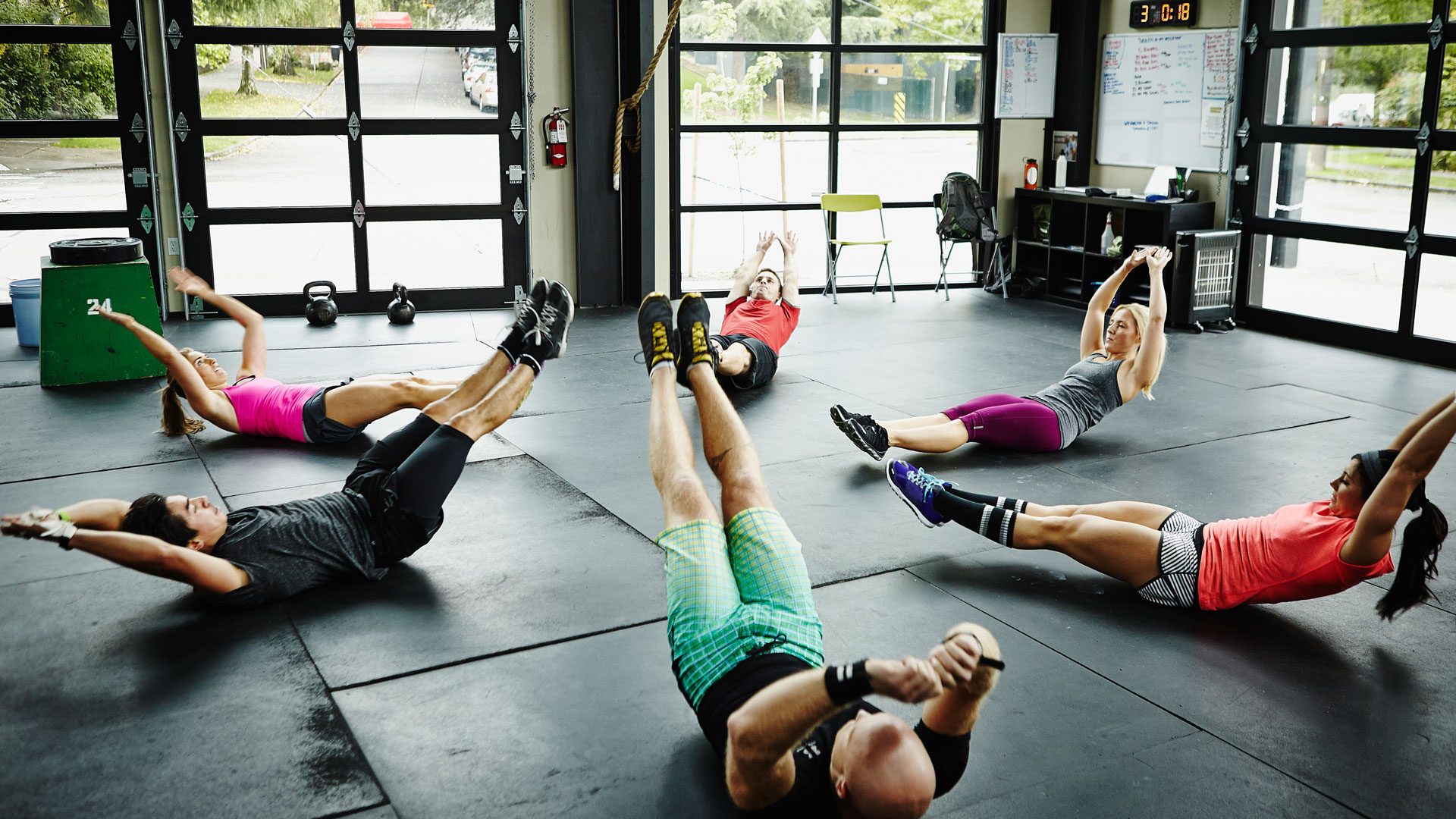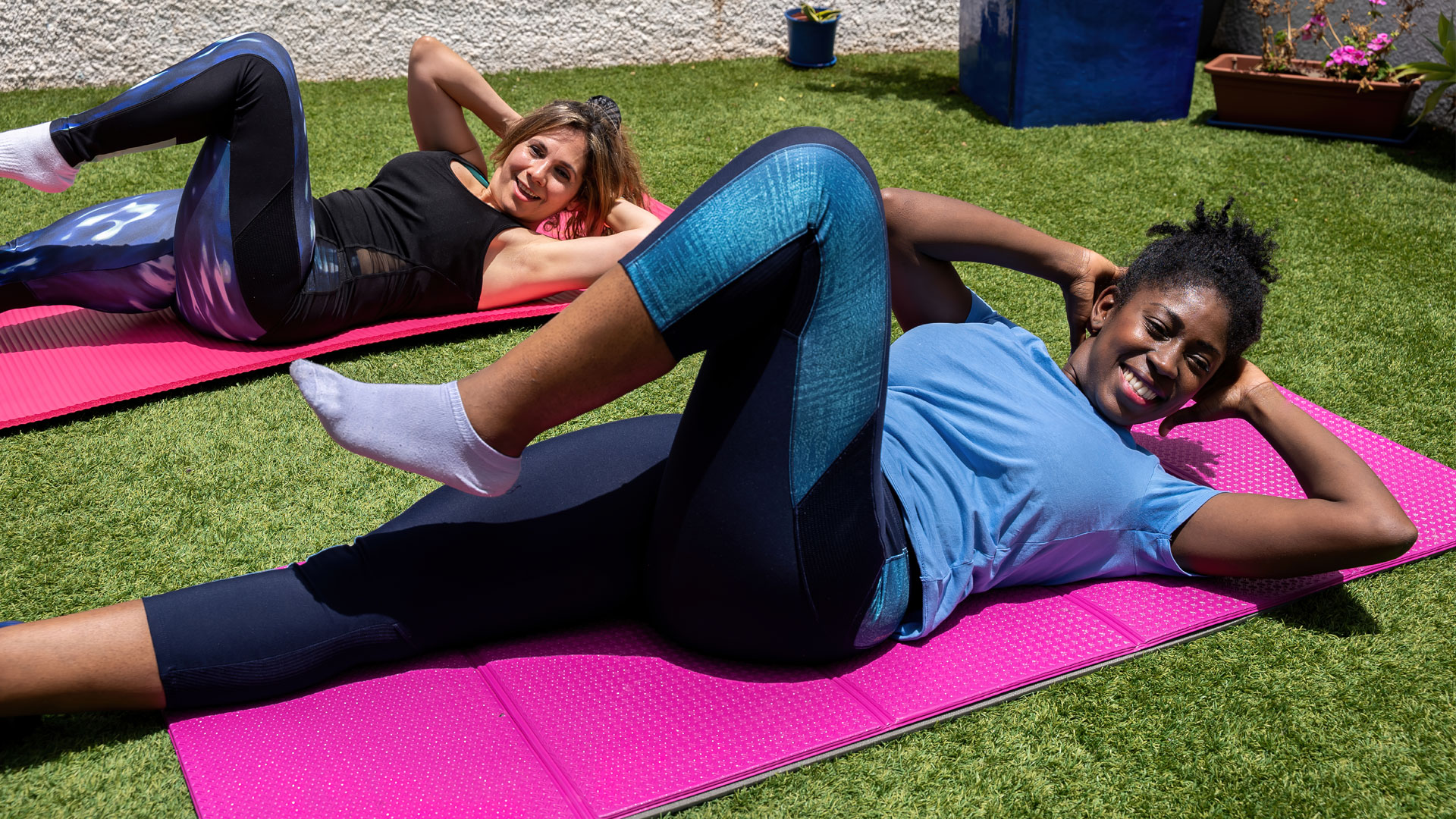7 core strengthening exercises
Find 7 core strengthening exercises to try, helping you build defined abs


Many people think that core strengthening exercises are all about traditional ab workouts but there’s much more to your core exercises than a regular crunch. Whether you are working out with the best ab roller, or doing sit-ups on a mat, we’ve spoken to a personal trainer to find out where to start when it comes to building a strong core.
And you don’t just use your core muscles when you’re exercising. You actually use these muscles all day, every day which is why core strengthening exercises are so important. Whether you’re walking, reaching to get something, getting up from a chair, or simply just standing, the muscles of your midsection help to keep you stable in nearly every movement.
So, here’s how to reap the benefits of core strengthening exercises and a program of exercises to try.
James is a multi-award winning coach who makes up half of the Midlife Method. Himself and his wife have more than a decade's experience teaching men and women in their 40s and 50s to improve their minds and bodies. Davis began his career in psychology, coaching and stress management before diversifying his knowledge and qualifications in training, nutrition and hormone health.
What is core strength?
Personal trainer James Davis, one-half of the Midlife Mentors who’s been in the health, fitness, and coaching industry for 12 years says, “People tend to think of the core as the abdominals at the front of the body when, in fact, it’s a lot more than that. Our core is actually a sling of muscles running across the lower part of our abdomen, front, back, and sides, connected to our pelvis and spine. The core stabilizes our body and doesn’t just have an impact on our posture, but also influences our legs and upper body. Think of core strength as your ability to maintain a good posture, and to stabilize your entire body effectively.”
The core muscles include:
- The rectus abdominis (the muscles along the front of your abdomen)
- Transverse abdominis (the internal core muscles that wrap around your sides and spine)
- Erector spinae (a set of muscles in your lower back)
- Pelvic floor muscles
- The internal and external obliques (the muscles on the sides of your abdomen)
Core exercises: what are the benefits?
Davis says, “Our evolution hasn’t yet caught up with our more sedentary lifestyle, as human beings we’re designed to be up and moving on our feet for the majority of our day. By working on our core we can not only improve our posture, but also improve our all-around health: with a strong core we can increase stride length for example, and when our stomach muscles are strong they pull in our stomach and help improve digestion. A lot of lower and upper back pain can start from having a week core, so also think of core exercises as a preventative measure.”
“The benefits of adding more movements around your hips, spine, and shoulders are that you will be able to hit more muscles harder. This will require spending more energy. You will also become more skillful at responding to movement, which can help to reduce the risk of injury.”
Start your week with achievable workout ideas, health tips and wellbeing advice in your inbox.
7 core strengthening exercises to try
Davis says, “The good news is that the core responds well to exercise, so short sessions can get big results. For all the exercises below start by aiming for a set of 10 reps for each move, one after the other in a circuit. Add more rounds as required and aim to do the workout three times a week with a day’s rest in between.”
The accordion crunch
- Lie with your back flat on the floor, your knees drawn up to around a 45-degree angle with your feet flat in front of you as you would be for a conventional crunch.
- For the accordion, tilt your pelvis back towards you, then lift your shoulders up from the floor. The pelvic tilt helps isolate and keep the tension on the abdominals.
Exercise modifications - if you’re a beginner have your hands in front of you over your knees, intermediate crossed across your chest, or advanced floating by your ears - never pull the head with the hands.
Reverse crunch
- Lie flat on the floor with your legs out straight in front of you.
- Keeping your lower back pushed into the floor slowly lift your feet with your legs straight until you feel your lower back start to lift - stop, then slowly lower your feet back down.
Bicycle crunches

- Lie with your back flat on the floor, your knees drawn up to around a 45-degree angle with your feet flat in front of you as you would be for a conventional crunch.
- Place your hands by your ears and as you sit up bring one knee in towards you and twist your torso so your opposite elbow meets the knee.
- Straighten the leg as you lie back and repeat on the other side.
Supermans
- Lie face down on the floor arms extended above your head, legs out straight.
- Bend in the middle so your feet are lifting off the ground as you raise your upper body up, like a backward bend.
- Lower slowly and repeat.
If you find the full version challenging, try raising the opposite arm and leg at the same time.
Ankle taps
- Again, lie with your back flat on the floor, your knees drawn up to around a 45-degree angle with your feet flat in front of you as you would be for a conventional crunch.
- Lifting your shoulders off the floor slightly, you're going to reach your right hand down towards your right ankle, then repeat on the left-hand side.
Table tops
- Lie with your back flat on the floor, pull your knees up so your thighs are at a 90-degree angle to your body, your lower leg at a 90-degree angle to your thigh, pointing away from you.
- Slowly extend one leg out so it is straight out around 2 to 4 inches off the floor, then bring it back and repeat on the other side.
Russian twist

- Sit on the floor with your back upright, your knees bent at around a 45-degree angle, and your feet flat on the floor.
- Brace your abs and slowly lean back until you feel the tension.
- Put your arms out in front of you and slowly twist around to one side with your upper body, then the other.
Catherine is a freelance journalist writing across titles such as Verywell Health, Healthline, The Daily Telegraph, Refinery29, Elle, and Vogue. She specializes in content covering health, fitness, wellness, and culture.
A once reluctant runner, Catherine has competed in 30 running events in the past five years and looks forward to one day running the London Marathon.
